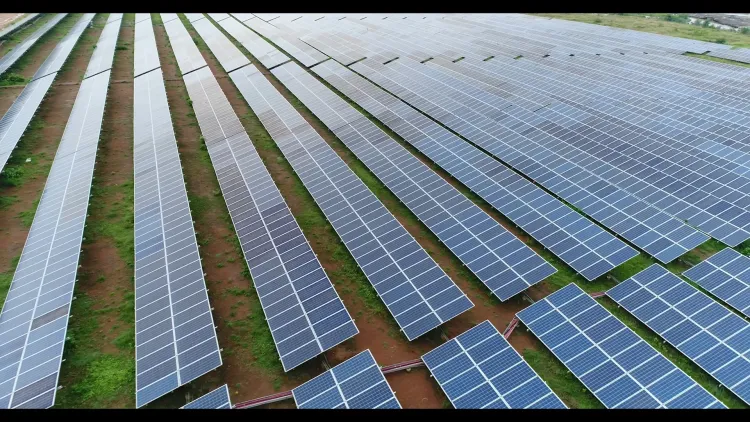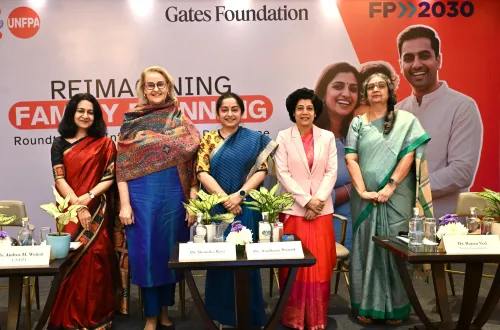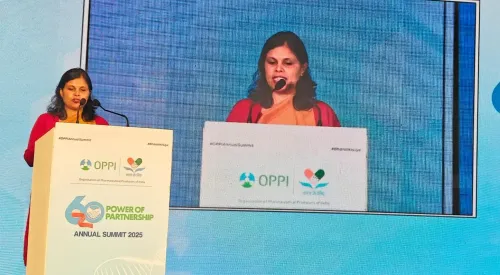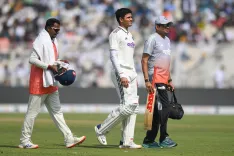Will the Share of Renewable Energy in India's Power Mix Exceed 35% by 2030?

Synopsis
Key Takeaways
- India's renewable energy share is anticipated to surpass 35% by FY30.
- Incremental capacity addition of approximately 200 GW is expected by FY30.
- Challenges include execution risks and infrastructure development.
- BESS technology is crucial for grid stability.
- Government initiatives support the growth of renewable energy projects.
New Delhi, Nov 20 (NationPress) The proportion of India’s electricity generated from renewable energy (RE) sources, including large hydroelectric projects, is projected to exceed 35 percent by FY30, up from 22.1 percent in FY25. This increase is attributed to an anticipated additional capacity of approximately 200 GW from FY25 to FY30, as stated in a report published on Thursday.
The achievement of this target depends significantly on the successful execution of the ongoing project pipeline, which includes the bidding process and signing of Power Purchase Agreements (PPAs). Additionally, the development of sufficient transmission infrastructure and timely bidding for new RE projects are crucial, according to the report from the rating agency ICRA.
The outlook for the renewable energy sector is deemed “stable,” driven by robust policy support, competitive tariffs, and sustainability initiatives from large commercial and industrial customers.
Nonetheless, there are execution challenges, such as issues with land acquisition, transmission infrastructure, delays in PPAs, equipment price fluctuations, and the financial health of distribution utilities.
After a considerable RE capacity of 47.3 GW awarded in FY24, followed by 40.6 GW in FY25, the current year has seen a marked slowdown in bidding activity, with only 5.8 GW awarded in the first eight months of FY26. Additionally, there remains a substantial amount of unsigned PPA capacity, estimated at around 40-45 GW, based on industry insights.
Girishkumar Kadam, senior vice president of ICRA, noted, “The reduction in new project bids and delays in signing PPAs for significant RE capacity underscores concerns regarding execution related to transmission connectivity for the RE sector. Enhancing both storage capacity and grid robustness at both state and inter-state levels, in a timely manner, is critical as the share of renewables grows in the energy mix.”
As India faces challenges with variability in renewable generation, Battery Energy Storage Systems (BESS) have emerged as vital for maintaining grid stability. The government has implemented viability gap funding for BESS and extended transmission charge exemptions for storage projects until 2028, the report highlights.
Since April 2024 through October 2025, Central nodal agencies and state discoms have awarded standalone BESS projects totaling over 20 GWh. Furthermore, the proportion of round-the-clock (RTC), firm and dispatchable renewable energy (FDRE), and solar plus storage projects accounted for around 90 percent of the total RE capacity awarded in the first eight months of FY26.
The significant decline in battery prices over the last decade has contributed to reduced energy storage costs and a global increase in BESS project adoption. Based on current battery costs, ICRA estimates that the levelized cost of storage using BESS for 2-4 hours is relatively high, ranging from Rs. 4.0-7.0 per unit, compared to Rs. 5.0 per unit for Pumped Storage Hydropower (PSP) projects.
This represents a considerable improvement from the previous level of over Rs. 8.0-9.0 per unit in 2022. Although BESS costs for 4-hour storage remain higher than those of PSP, the execution risks and gestation periods for BESS projects are comparatively lower, according to the report.
Kadam further commented on the competitiveness of standalone BESS projects, stating, “Despite the shorter lifespan and the need for replacement capital expenditures, the sustained drop in battery costs is likely to foster greater adoption.”









